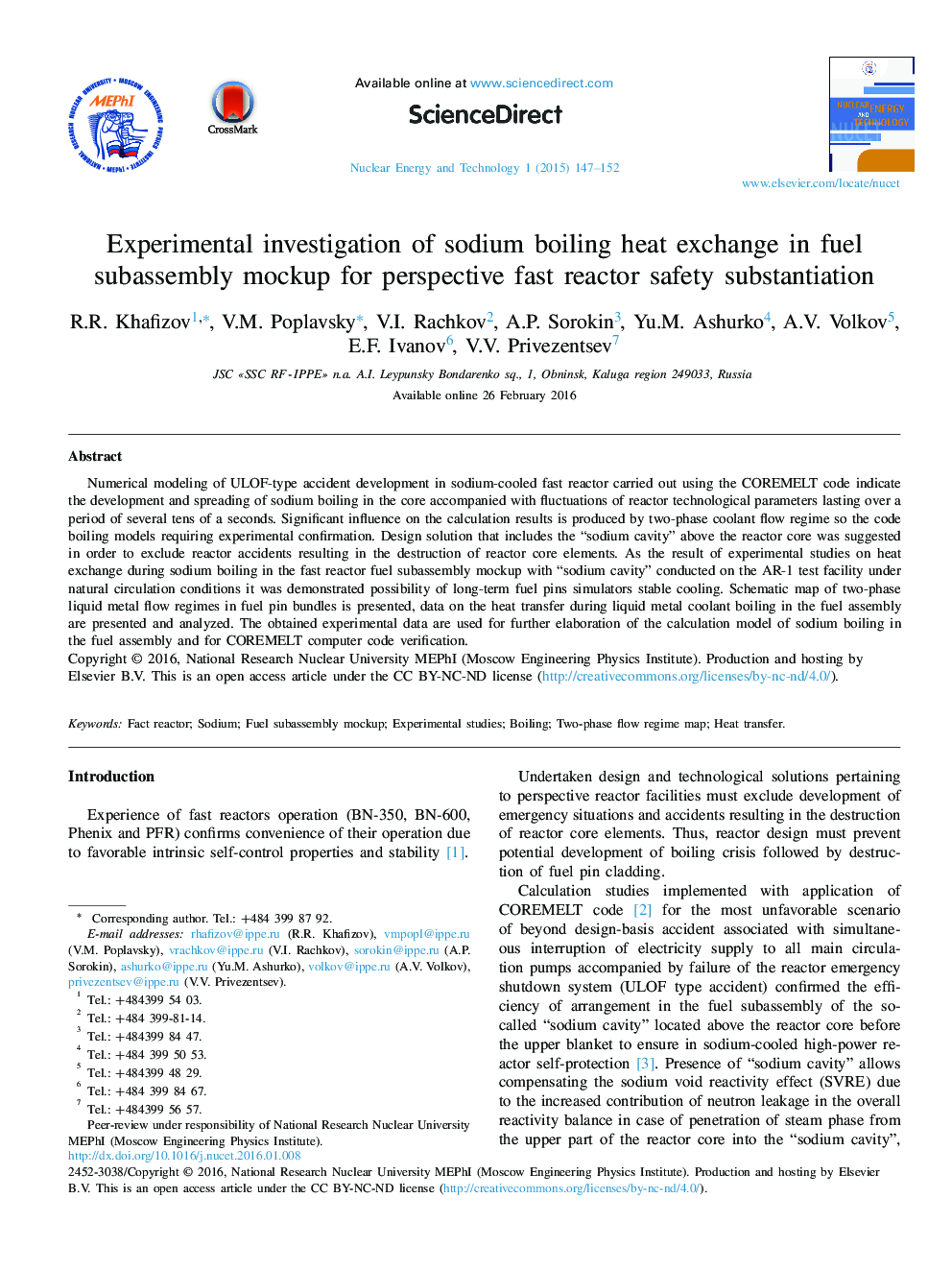| Article ID | Journal | Published Year | Pages | File Type |
|---|---|---|---|---|
| 366605 | Nuclear Energy and Technology | 2015 | 6 Pages |
Numerical modeling of ULOF-type accident development in sodium-cooled fast reactor carried out using the COREMELT code indicate the development and spreading of sodium boiling in the core accompanied with fluctuations of reactor technological parameters lasting over a period of several tens of a seconds. Significant influence on the calculation results is produced by two-phase coolant flow regime so the code boiling models requiring experimental confirmation. Design solution that includes the “sodium cavity” above the reactor core was suggested in order to exclude reactor accidents resulting in the destruction of reactor core elements. As the result of experimental studies on heat exchange during sodium boiling in the fast reactor fuel subassembly mockup with “sodium cavity” conducted on the AR-1 test facility under natural circulation conditions it was demonstrated possibility of long-term fuel pins simulators stable cooling. Schematic map of two-phase liquid metal flow regimes in fuel pin bundles is presented, data on the heat transfer during liquid metal coolant boiling in the fuel assembly are presented and analyzed. The obtained experimental data are used for further elaboration of the calculation model of sodium boiling in the fuel assembly and for COREMELT computer code verification.
